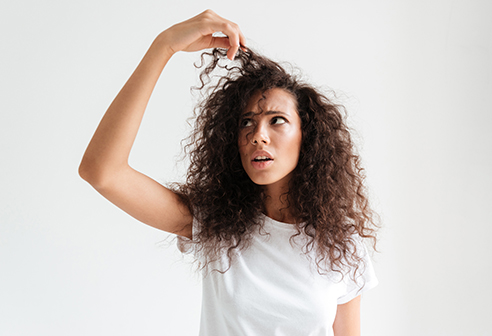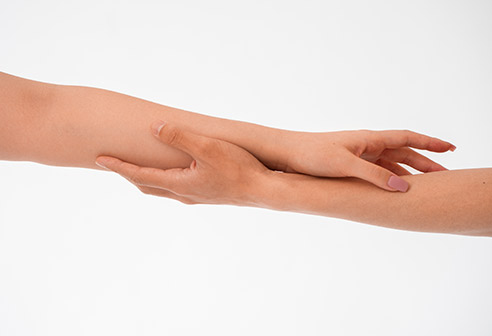
Our hair sometimes loses its health due to genetics, and sometimes due to smoking, irregular nutrition, sleep disorders, intense stress, chemical foods, and other reasons. While it may not be possible to completely stop our hair from falling out, Dr. Lida Çiteli significantly slows down hair loss and makes our hair stronger and healthier with the medical hair treatments she applies. Dr. Lida Çiteli, the address for medical aesthetic treatments, has explained everything you want to know about topics such as "PRP hair treatment, male pattern hair loss treatment."
Hair
Loss
In cases of hair loss, the type and severity of the shedding are first determined. If necessary, the underlying cause of the shedding is investigated. From this point on, a unique treatment protocol is prepared for the individual's specific conditions. Hair and body hair are made of a protein called keratin. They are produced in hair follicles located on the outer surface of our skin. Human hair grows an average of 15 cm per year. Hair growth occurs as old hair cells are pushed outwards by new hair cells towards the outer surface of the skin.
We have hair on every part of our body except the soles of our feet, eyelids, and palms, and most of it is too small to be seen. The most hair and body hair are found on our heads. An adult human has between 100,000 and 150,000 hair strands on their head. Losing one hundred of these hairs every day is considered normal. It should be known that at any point in life, 90% of the hair follicles on our head continue to grow.
Each follicle has its own life cycle consisting of three phases. In the first anagen phase, hair is actively growing. This phase continues for two to eight years. Afterwards, the second phase, the catagen phase, begins. It is a transitional phase where the hair transforms at the end of the anagen phase and lasts for three weeks. The last phase is the telogen phase. It is a type of resting phase that lasts two to three months. After the telogen phase, our hair naturally sheds and gives way to a new cycle. This life cycle can sometimes be shortened due to diseases, age, or environmental factors.
Why Does Hair Loss
Occur?
Hair loss is called alopecia. Hair loss can result from many causes and occurs in several types. Factors such as genetic predisposition, immune system diseases, medication use, stress, hormonal factors, chemical substances, anxiety disorders, and hair development disorders can lead to permanent or temporary hair loss.
Androgenic alopecia, commonly known as baldness, is a genetic condition that can affect almost anyone. It is also classified as male pattern baldness. This type of hair loss appears in adolescence and in the twenties. The receding hairline tends to gradually disappear from the front scalp. In female pattern baldness, we do not observe any thinning until middle age. However, women develop a general thinning over the head, usually concentrated in the crown area.
The natural condition where our hair gradually thins due to advancing age is called involutional alopecia. The number of hair follicles entering the resting phase increases with our age. The remaining hairs become shorter and grow less. Hair loss is seen not only in old age but also in adolescents, children, and young adults. These cases are called alopecia areata, and irregular hair loss or complete baldness may result. However, in the vast majority of these cases, hair returns within a few years.
All body hair, including eyebrows, pubic hair, and eyelashes, can fall out in cases of alopecia universalis.
One cause of hair loss is inflammatory skin conditions. These skin diseases lead to scars that destroy our hair's ability to regenerate. In addition, scars after trauma can also lead to permanent hair loss. Radiation exposure to the head can prevent our hair from growing back with the same volume.
Genetic predispositions inherited from a person's parents are a determining factor in hair loss. Factors such as lupus, diabetes, childbirth, fungal infections, anemia, thyroid disease, burns, stress, and ringworm also lead to temporary hair loss.
Lightening hair color, tight braids, hair dyeing, perms, and too frequent shampooing also make our hair weaker and more fragile over time. However, these do not result in baldness, only thinning of our hair strands. If there is no serious damage to the person's scalp, the source of the problem is understood, and necessary steps are taken, and hair continues to grow normally.
How to Prevent Hair
Loss?
Natural hair loss, under normal circumstances, cannot be reversed. However, it is possible to protect our hair from damaging factors. Hair dryers, dyes, straightening products, hot curling irons, chemical cosmetic products, and perms are among the most important reasons why our hair becomes thin and fragile.
The first solution to try is to leave our hair in its natural color and form. After dyeing, we need to give our hair time to rest and recover. Choosing a shampoo suitable for our hair type is also important. To prevent our hair ends from breaking, we can choose soft, natural-bristled brushes and brush gently. Brushing our hair while it is still wet will also reduce the risk of breakage and snapping.
Hair Treatment
Methods
Hair Mesotherapy
Hair loss or weakening is a significant problem for everyone, both women and men. The increasing intensity of stress in daily work life exposes all of us to the risk of hair loss. Hair Mesotherapy is one of the most effective treatments in combating hair loss processes that affect us negatively both aesthetically and psychologically. With this treatment that strengthens hair cells by nourishing them, it is very easy to have thicker, shinier, and more voluminous hair. With this treatment, which provides all the protein, antioxidants, minerals, and vitamins our hair cells need, you can regain healthy growing hair. To get information about Hair Mesotherapy with Dr. Lida Çiteli, you can click here.
Hair PRP
Hair PRP treatment is the process of applying platelet and thrombocyte cells found in our blood to hair roots. With Hair PRP, it is possible to prevent hair loss and revitalize our hair strands. In this process, blood is taken from the person. The collected blood is separated from platelet and thrombocyte cells by centrifugation and microfiltration. Afterwards, the plasma obtained from these cells is applied to the person's hair root tissue. The Hair PRP application, which helps people with sparse and weak hair to regain their hair's strong and vibrant state, prevents hair loss and hair thinning. You can also click here to get detailed information about Hair PRP treatment with Dr. Lida Çiteli.
Hair Filler
Hair Filler is the first hair filler applied worldwide. Its main purpose is to stop hair loss and restore lost health to the hair. However, what truly sets this treatment apart is that the hair filler achieves all of this easily and comfortably. Hair filler, which has an important place among medical aesthetic applications, must be performed by an expert doctor. To get detailed information about Hair Filler, which is based on the regeneration of your scalp and increased blood circulation, click here.
NOTE: Our content regarding diseases and treatment methods is for informational purposes only. For all matters related to your health, please consult your doctor or a healthcare institution.



